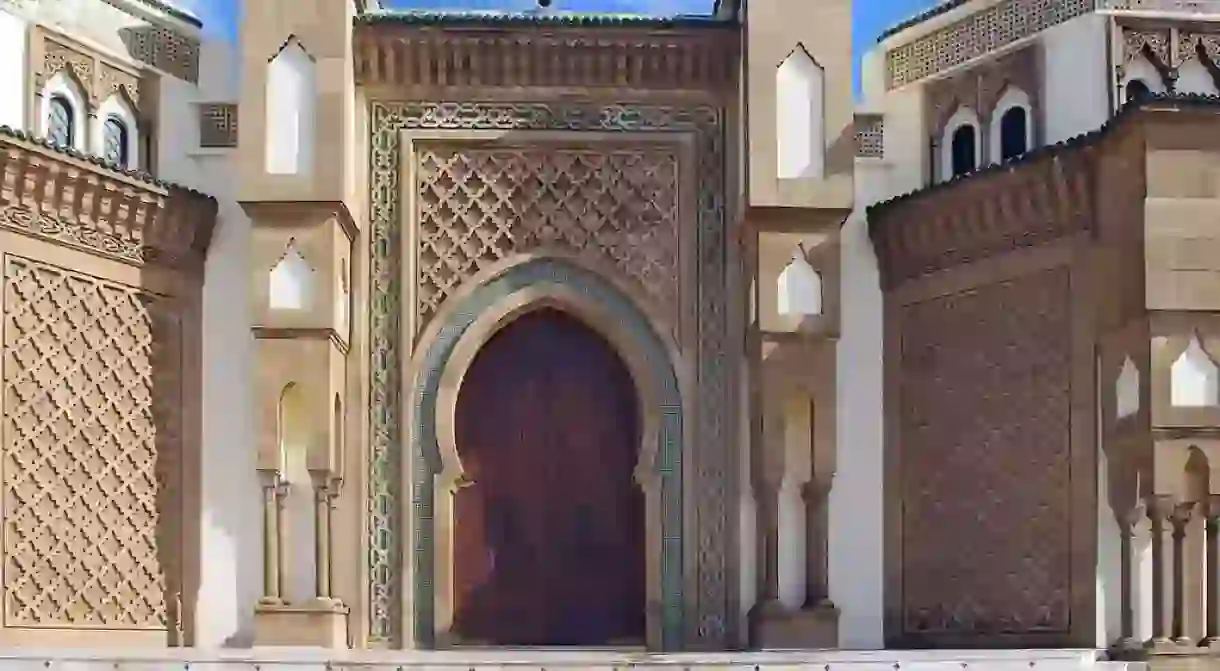A Tour of Agadir's Architectural Landmarks

Much of the Agadir of old was ravaged during a mighty earthquake that rocked the Moroccan coastal city. While this means that there are very few historic landmarks around the city it does mean that the city is rather unique when compared with many other Moroccan destinations in that its designs are largely modern. Here are some of the city’s most interesting pieces of architecture.
Agadir Oufella
Constructed in the 1570s, Agadir Oufella was once an important fortress, Heavily damaged in the earthquake, all that remains today of the once-mighty kasbah is small sections of the outer walls, a handful of passageways, and crumbling foundations. For a sense of Agadir’s history, however, it is well worth taking a trip up the hill to see.

Agadir Palace
Although not open to the public, Agadir Palace is the King’s official home in the city. It’s located in the neighbourhood of Founty, also sometimes known as the Bay of Palm Trees. The splendid palace sits in extensive gardens and has direct access to the beach. The high walls and armed guards sadly prevent people from getting a closer look, but the monumental gate provides a clue as to the rich wonders that lie beyond.
La Medina d’Agadir
A modern gem just outside of the city, La Medina d’Agadir was built on private land to resemble the old medina of Agadir, which was another victim of the earthquake. The idea of a Moroccan-Italian architect and designer, the large medina offers a glimpse of what Agadir would have looked like in the past. Expert craftspeople were used to create the medina, using age-old techniques and locally sourced materials. A beautiful modern gem with whispers of the past, La Medina d’Agadir was built in the early 1990s.

Post Office
Designed in 1966 by a French-Moroccan architect, Agadir’s post office is housed in a long rectangular-shaped building. It has quite an odd appearance, especially when considering the grand colonial beautiful and historic marvels elsewhere in the country. Nonetheless, it is interesting from a design point of view. Covering three floors, the squat building has large storage areas for mail and parcels, a telecommunications room, apartments to accommodate members of staff, a mail-sorting area, and public service counters.
Mohammed V Mosque
Built on the orders of Morocco’s previous king, Mohammed V Mosque is one of the city’s major places of worship. The minaret is fairly simple when compared with other great mosques around Morocco, with bricks and white paint topped with a small patch of decorative carvings and the traditional three balls. The outer walls, however, are much more impressive. Radiating outwards from a large monumental gate, the walls display fine decorative plasterwork in traditional Islamic designs. The heavyset wooden door is surrounded by delicate green tiling. Part of the city’s renovation project, building started on the mosque in 1988. It opened several years later, in 1991. Non-Muslims are not allowed inside.

Loubnan Mosque
Also known as the Lebanese Mosque, Loubnan Mosque was named by a former king, Hassan II. In contrast with the Mohammed V Mosque, Loubnan Mosque has a much more attractive minaret and fairly plain outer walls. Arched recesses can be found around the rather plain outer walls, some with windows and some with doors inside. Carved plasterwork with a green background covers much of the minaret. The top is adorned with zellige tile work in shades of green and maroon. It is closed to Non-Muslim visitors.

Band Villas
Located in the residential area of Talborjt, the homes known as the Band Villas were constructed quickly to meet an urgent need for affordable local housing. Designed by Jean-Francois Zevaco, he was awarded the Aga Khan Award for his work on the homes. The houses each have a terrace, designed to get plenty of sunlight, and they also benefit from lots of greenery.
Memoire d’Agadir
The small building of the Memoire d’Agadir museum is a visual delight. Next to the greenery of Jardin de Olhão, it’s somewhat like a hidden treasure. Built from concrete and stone to resemble a smaller version of a traditional palace, it boasts detailed stonework and inscriptions around the door. There are also detailed walls within the garden.

Memorial Wall
Dedicated to the many people that perished during the earthquake, Agadir’s Memorial Wall can be found in the city centre. Almost five metres long and built from concrete, it is interesting because of what it stands for and the emotive inscription. The writing on the wall translates into, “As fate has destroyed Agadir, its rebuilding depends on our faith and will”, and it was written in attractive Arabic calligraphy.
Cap Rhir lighthouse
Sitting on the coast close to Agadir, Cap Rhir lighthouse was built in the 1930s to keep mariners safe. Several smaller buildings sit within the surrounding walls. The white circular tower is topped by a metal lantern roof.

There are many fancy resorts around Agadir, adding further to the city’s diverse architecture. Atlantic Palace Agadir, Ksar Massa, the two Sofitel hotels, and the Oasis Hotel and Spa are just a few examples of attractive hotels and resorts in Agadir.
Fans of architectural delights could also take a trip to nearby Taroudant, which is often referred to as a mini Marrakech.













